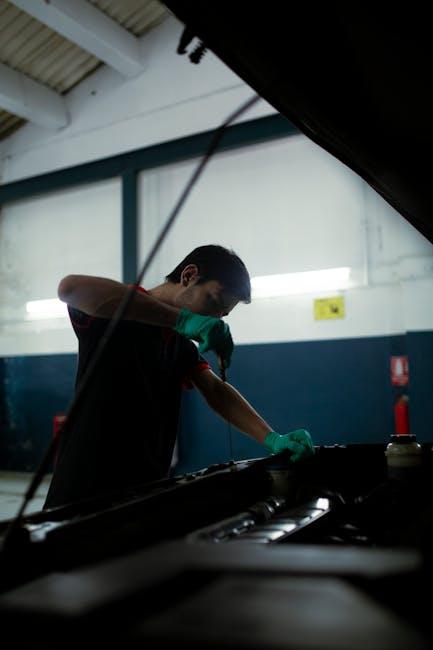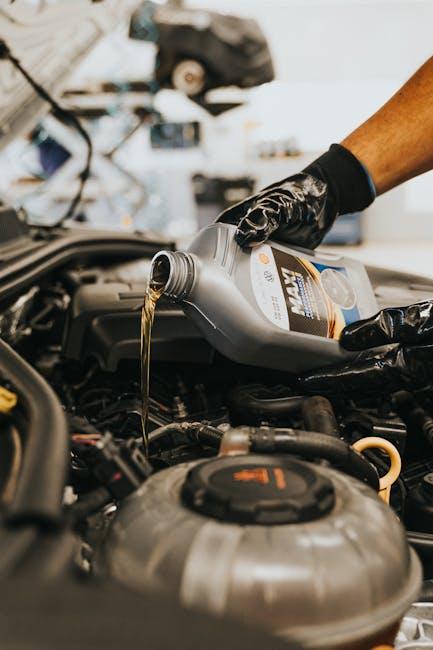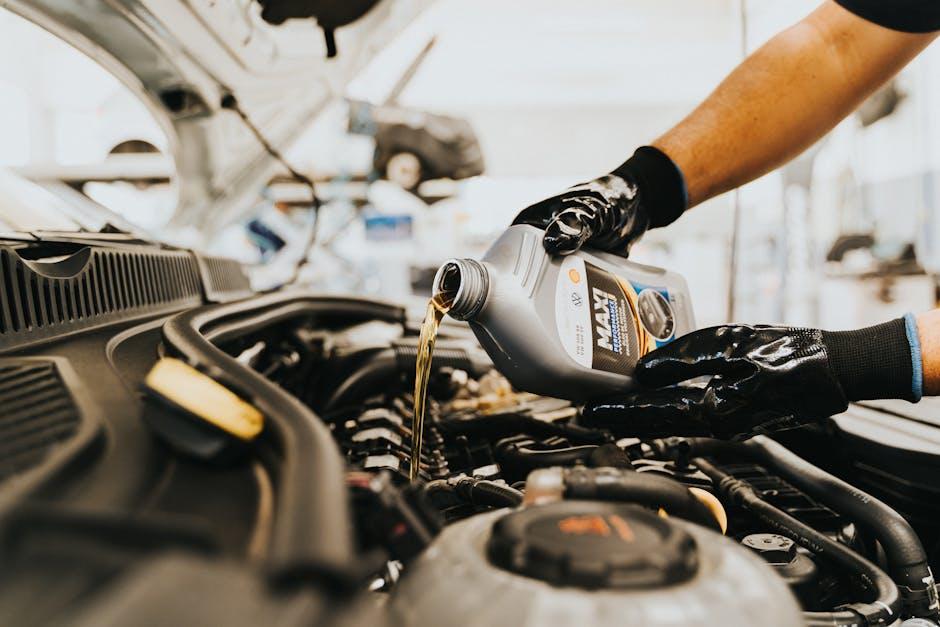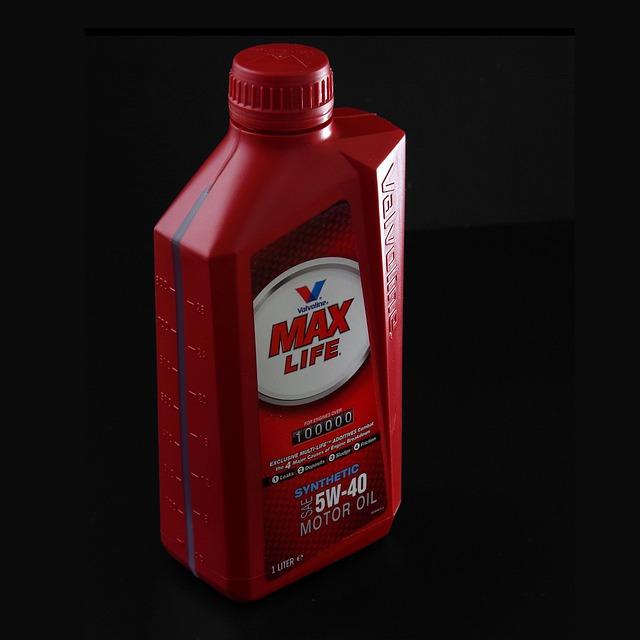Beneath the purr of a well-tuned engine lies a silent threat that can quietly undermine your vehicle’s health: engine oil leaks. These sneaky drips and stains may seem harmless at first glance, but spotting them early can save you from costly repairs and unexpected breakdowns. In this guide, we’ll unravel the subtle signs of oil leaks, showing you how to become a detective of your own engine’s wellbeing—before those small spots turn into big problems.
Table of Contents
- Understanding the Common Signs of Engine Oil Leaks
- Identifying Leak Sources Under the Hood
- Tools and Techniques for Detecting Oil Leaks
- Interpreting Oil Stains and Drips on Your Driveway
- Preventive Measures to Minimize Engine Oil Leakage
- When to Seek Professional Help for Oil Leak Repairs
- Q&A
- To Conclude

Understanding the Common Signs of Engine Oil Leaks
Spotting a leak early can save you from costly repairs down the road. One of the first indicators of an engine oil leak is unusual puddles forming where you park. These puddles tend to be dark amber or black, and they often have a slick, greasy texture. Alongside visible spots, watch for a burning oil smell while driving, which signals oil dripping onto hot engine parts. Unexplained drops in oil levels, despite regular top-ups, also hint at a silent leak somewhere beneath the hood.
Other subtle signs include:
- Smoke or steam rising from the engine bay, often blue or gray in tint.
- Engine overheating due to decreased oil levels affecting lubrication.
- Warning lights on the dashboard like the oil pressure light illuminating unexpectedly.
| Sign | Description | What to Check |
|---|---|---|
| Oil Spots | Dark, greasy puddles under the car | Inspect driveway or parking spot regularly |
| Burning Smell | Distinctive scent during driving | Check for leaks near exhaust or engine block |
| Low Oil Level | Oil dipstick shows reduced volume | Monitor oil levels frequently |
| Warning Lights | Dashboard lights turn on | Use OBD-II scanner or visit mechanic |

Identifying Leak Sources Under the Hood
When investigating oil leaks under the hood, the first step is to carefully examine all engine components where oil could escape. Focus on areas with visible grime or darker stains, as fresh oil often attracts dirt and dust, making it easier to pinpoint. Key suspects include the valve cover gasket, oil pan gasket, and the oil filter, which are frequent culprits due to wear or improper installation. Use a flashlight to illuminate hard-to-see spots and consider lightly wiping surfaces to identify fresh oil traces. Don’t overlook smaller elements such as oil pressure sending units or the timing cover, which may develop leaks as seals wear out.
To organize your inspection, consider these common leak sources:
- Valve Cover Gasket: Often found at the top of the engine, this gasket seals the cover that protects the camshaft and valves.
- Oil Pan Gasket: Located at the bottom of the engine, it’s prone to leaks due to road debris impacts or gasket degradation.
- Oil Filter: Leaks here may be caused by a loose or damaged filter or a worn sealing gasket.
- Drain Plug: Check for stripped threads or an improperly seated plug.
| Component | Common Issue | Leak Indicator |
|---|---|---|
| Valve Cover Gasket | Gasket wear | Oil pooling near top of engine |
| Oil Pan Gasket | Gasket cracks or damage | Drips underneath engine |
| Oil Filter | Improper installation | Oil around filter base |
| Drain Plug | Loose or damaged plug | Fresh oil spots under plug |

Tools and Techniques for Detecting Oil Leaks
Detecting oil leaks early can save your engine from severe damage and costly repairs. One of the most effective approaches is using UV dye kits, which contain special fluorescent dye added to the oil system. When exposed to a UV light, the dye highlights even the smallest leaks that might otherwise be invisible to the naked eye. Alongside these kits, a simple but powerful method involves inspecting the engine with a high-quality flashlight and mirror, allowing you to reach and examine tricky spots like under the valve cover or near the oil pan gasket.
Mechanical tools also play an essential role in pinpointing leak sources. A pressure tester can be connected to the engine’s crankcase to simulate operating conditions, forcing air through potential weak points and causing visible bubbles where oil might escape. Additionally, using cleaning solvents to wipe suspect areas before checking can help by removing dirt and grime buildup, making fresh leaks easier to spot. Here’s a quick table summarizing common tools and their primary uses:
| Tool | Purpose | Ease of Use |
|---|---|---|
| UV Dye Kit | Highlights leaks under UV light | Moderate |
| Pressure Tester | Simulates engine pressure to find leaks | Advanced |
| Flashlight & Mirror | Visual inspection of hard-to-see areas | Easy |

Interpreting Oil Stains and Drips on Your Driveway
Recognizing the subtle differences in oil stains can save you from costly repairs or unexpected breakdowns. Fresh engine oil leaks usually appear as dark, glossy spots with a slightly oily feel, whereas older stains fade into a rusty, brownish patch as the oil oxidizes. Pay close attention to the size and pattern of the spots — small, frequent drips near the front of the vehicle often indicate a minor gasket leak, while larger, irregular puddles underneath suggest a more significant issue such as a cracked oil pan or loose drain plug.
When examining these blemishes, consider the location and your driving habits. Here are some quick pointers to help differentiate common types of fluid leaks:
- Engine oil: Dark brown or black, slippery texture
- Transmission fluid: Reddish tint, smooth and oily
- Coolant: Bright green or orange, watery consistency
| Stain Characteristic | What It Indicates |
|---|---|
| Small, pinpoint spots near engine’s front | Valve cover gasket leak |
| Large puddle under the middle | Oil pan or drain plug failure |
| Thin, spreading stain with a reddish hue | Transmission fluid leakage |

Preventive Measures to Minimize Engine Oil Leakage
To keep your engine in top shape and avoid the costly consequences of oil leaks, regular maintenance is key. Prioritize frequent inspections of oil seals and gaskets, which are common culprits for leaks. Ensuring that oil changes are performed on schedule with the correct grade of oil can also significantly reduce wear and tear. Additionally, cleaning the engine bay periodically prevents grime buildup that can mask minor leaks, allowing you to catch issues early before they escalate.
Effective practices to minimize oil leakage include:
- Using high-quality replacement parts for seals and gaskets to improve durability.
- Properly tightening bolts to manufacturer specifications, avoiding over-torquing that can cause damage.
- Monitoring engine temperature to prevent overheating, which can degrade seals.
- Applying silicone sealants where recommended to reinforce suspect areas.
| Preventive Action | Benefit | Frequency |
|---|---|---|
| Seal & Gasket Inspection | Detect early leaks | Every 10,000 miles |
| Scheduled Oil Change | Maintain oil integrity | Every 5,000 miles |
| Engine Bay Cleaning | Spot leaks easily | Quarterly |
| Bolt Torque Check | Prevent damage | During major services |

When to Seek Professional Help for Oil Leak Repairs
Knowing when to hand over your car to a professional can save you from costly damages and potential engine failure. If you notice that the oil leak is persistent despite your attempts to clean or modestly repair it, it’s a clear signal to consult an expert. Additionally, if the oil spots increase in size, or you observe a drop in oil levels between regular checks, it’s no longer a minor issue. Pay close attention to any warning lights on the dashboard, unusual engine noises, or burning smells — these symptoms suggest that the leak may be affecting critical components and demands immediate professional intervention.
Some leaks are deceptively subtle. Here’s a quick checklist to help gauge when to seek help:
- Visible puddles under the vehicle after short parking periods
- Oil stains in the engine compartment or on engine parts
- Excessive smoke or blue-tinted exhaust fumes
- Rapid oil consumption requiring frequent top-ups
| Indicator | Implication | Recommended Action |
|---|---|---|
| Oil Pressure Warning Light | Critical oil loss or low pressure | Immediate professional repair |
| Sticky or Grimmy Engine Parts | Ongoing leak spreading | Detailed engine inspection |
| Oil Smell Inside Cabin | Possible oil burns or leaks near heater core | Urgent diagnostics |
Q&A
Q&A: How to Spot Engine Oil Leaks
Q1: Why is it important to spot engine oil leaks early?
A1: Catching an oil leak early can save your engine from serious damage. Oil lubricates critical engine parts, and a leak can lead to low oil levels, increased friction, overheating, or even engine failure. Plus, untreated leaks often get messier—and more expensive—over time.
Q2: What are the common signs that indicate an engine oil leak?
A2: Look for fresh, dark amber to black oil puddles under your car after it’s been parked overnight. You might also notice a strong burnt oil smell, smoke coming from under the hood, or dirt and grime sticking excessively around the engine bay where oil may be seeping out.
Q3: How do I visually inspect for oil leaks?
A3: Start with a clean slate—wash your engine and undercarriage to remove grime. After running the engine for a bit, look underneath for wet, shiny spots that weren’t there before. Pay close attention to gasket joints, oil pan bolts, valve cover seals, and the oil filter area.
Q4: Can different types of oil leaks have distinct appearances?
A4: Yes! Fresh oil is slick and smooth; it often looks darker on hot engines. Older leaks may appear crusty or mixed with dirt, forming a grimy residue. Transmission fluid leaks, by contrast, tend to be reddish—so be sure to differentiate fluid colors carefully.
Q5: Are there any tools or tricks to help pinpoint an elusive oil leak?
A5: Absolutely! Using fluorescent UV dye added to the oil can light up leaks under a UV lamp. Additionally, check oil levels frequently and monitor dashboard oil pressure indicators as indirect clues. A mechanic’s smoke test can also reveal hidden leaks inside the engine bay.
Q6: When should I see a professional about an oil leak?
A6: If you spot persistent leaks, notice drops in oil levels between fill-ups, or if your engine warning light pops on, it’s wise to visit a mechanic promptly. Early professional diagnosis helps prevent costly repairs and keeps your engine running smoothly.
Q7: Can minor oil leaks be ignored?
A7: It’s tempting to overlook small leaks, but oil leaks tend to worsen over time. Even a minor drip can signal worn seals or loose components that could escalate into bigger problems, so addressing leaks sooner rather than later is best for your car’s health.
Q8: How does engine oil leakage impact the environment?
A8: Oil leaks contribute to pollution, contaminating soil and waterways. Properly spotting and fixing leaks helps protect the environment by preventing toxic oil from seeping into nature.
In summary: Being an oil leak detective takes a keen eye and a little know-how. Watch for puddles, smells, smoke, and oily grime, and don’t hesitate to clean and inspect your engine regularly. When in doubt, lean on professional expertise—it’s your engine’s best defense.
To Conclude
Spotting engine oil leaks may seem like a small detail in the grand tapestry of car maintenance, but it’s one that can save you from bigger headaches down the road. With a keen eye and a little know-how, you can catch those subtle signs before they turn into costly repairs. So, next time you peek under your hood or glance at your driveway, remember: a drop of vigilance goes a long way in keeping your engine running smoothly and your journey worry-free.

